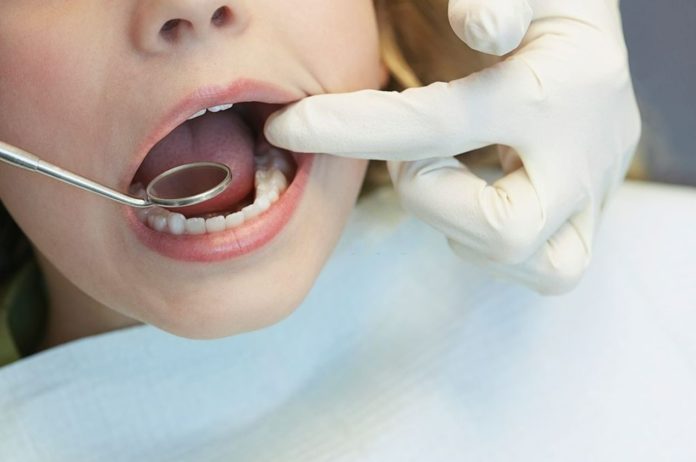Chalky tooth enamel – evident as discolored enamel spots – affects one out of every five children, causing severe toothaches and decay, as well as abscesses, extractions, and orthodontic issues.
Now, a team of researchers from The D3 Group located at The University of Melbourne in Australia and the University of Talca in Chile have identified the process underlying molar Hypomineralization, the most prevalent type of chalky teeth.
They reveal in the journal Frontiers of Physiology today that chalky molars form when developing enamel is contaminated by albumin, a protein found in both blood and the tissue fluid around developing teeth. Children’s illnesses appear to be the main cause of this.
“The result is a sort of ‘mineralisation blockage’, which is highly localised to the areas on individual teeth that become chalky enamel spots,” said Mike Hubbard, lead author.
“This discovery allows us to correct 40 years of medico-dental dogma which blamed defective enamel-forming cells. What this dogma couldn’t explain is why chalkiness affects only one or a few teeth in a child’s mouth.”
“We’ve shown instead that albumin leaks in occasionally at weak spots, binding to enamel-mineral crystals and blocking their growth. It’s not a system-wide problem, but a very localised one.”
The researchers believe that albumin leakage is caused by common newborn diseases such as fever. They now intend to:
- Determine the specific underlying causes, such as environmental factors or pathogens
- Promote their findings to dentists, other child health professionals and parents, so they can all be on the lookout for chalky teeth.
“We can’t yet prevent chalky teeth from developing in the first place, but if health professionals catch them early – when they first enter the mouth – then we dentists can usually save them,” added Vidal Perez, a paediatric dentist and researcher at the University of Talca.
There are several types of chalky teeth, each of which is caused by a different factor, such as genetic abnormalities or nutritional deficiencies.
The team is especially worried about molar hypomineralization because it has the greatest social and economic impact.
“Molars are particularly prone to damage,” said Vidal. “They are hidden away at the back of our mouths, with grooves that catch food, and they’re harder to clean.”
A tooth with significant hypomineralization is ten times more susceptible to decay than one that does not have it. It’s a secret epidemic that’s inflicting a lot of pain.
Mike realized the scope of the problem when he noticed that fluoridation of community water sources resulted in a significant but insufficient reduction in tooth decay in children. A significant number of kids with unknown decay remained. To figure out what was going on, he established The D3 Group for developmental dental abnormalities, a research and education network.
Fluoride, which protects against tooth decay in normal enamel, has little to no effect on chalky molars, which are equally common in developed and poor countries.
Bernhard Gottlieb, an Austrian (and later, American) medical researcher, was the first to investigate chalky tooth enamel, reporting in 1920 the riddle that just specific areas of some teeth are afflicted.
“Building on this research breakthrough, and with appropriate resourcing, The D3 Group can now look towards a medical strategy for preventing this worldwide problem,” added Mike.
“This new avenue of research could one day eliminate about half of childhood tooth decay, along with its disturbing costs to affected individuals and society,” he said.
Source: 10.3389/fphys.2021.802833
Image Credit: Getty
You were reading: This is the main reason for children’s ‘chalky teeth’
